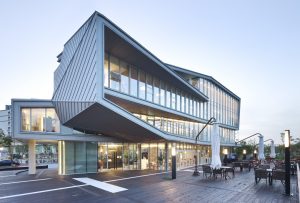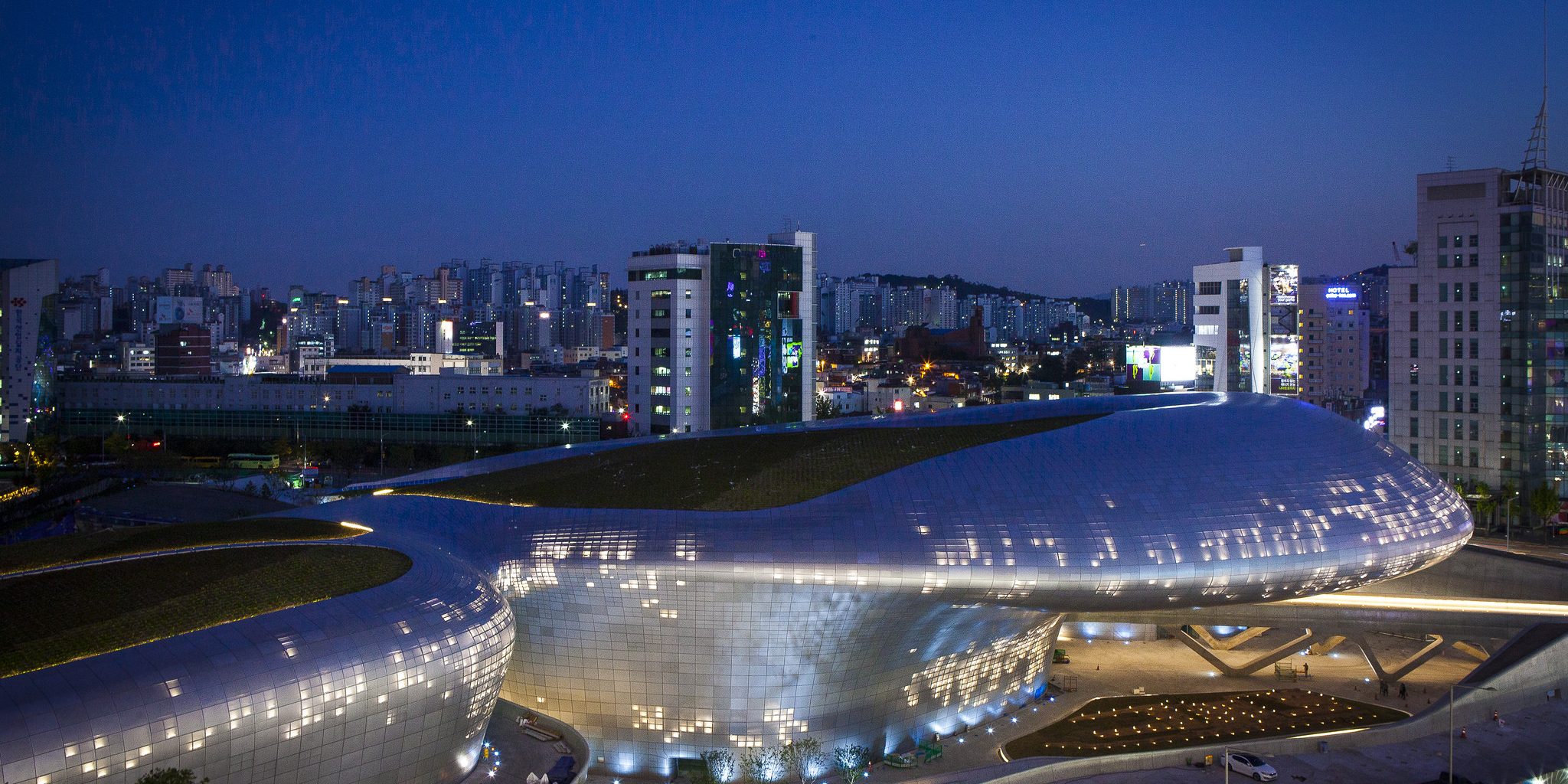When the Korean War ended in 1953, both Koreas had to rebuild themselves from the rubble left behind. In South Korea, businesses had to be started from the ground up and whole cities that had been levelled had to be rebuilt. In this period of fast rebuilding, style and visual architecture was the last thing in the minds of a nation that had to hit the ground running in industry and the reformation of its country. Many buildings were built in the simplistically and definitely not with a purpose for longevity or style.
It wasn’t until South Korea’s hosting of the 1988 Summer Olympics and the 2002 FIFA World Cup that the country began making huge strides in architectural achievements. Now, South Korea showcases some of the most interesting architectural feats in terms of style and functionality. Part of Seoul’s movement in making greener spaces, the Cheonggyecheon stream is probably its most famous example. Once a polluted stream that was covered up and a highway built over it in the 1960s, the Cheonggyecheon stream has had an incredible makeover, starting with the tearing down of the highway in 2003. The stream is now a popular spot for tourists and locals alike, starting in Gwanghwamun Square with a serene waterfall and stretching for miles, with different art projects and scenery changing along its stretches.
Another ambitious design project includes the ‘Floating Islands’ which were constructed out of old water filtration plants on the Han River which runs right through the city center. It’s a futuristic architectural design and the three islands become even more impressive at night as they illuminate colorfully on the water. Perhaps the most prominent example of South Korea’s architectural ambitions is Dongdaemun Design Plaza. Host to exhibitions and shopping opportunities, it has the reputation for being one of South Korea’s most avant-garde pieces, designed by architect ZahaHadid. Its design links its park to its plaza, making one continuous landscape and is remarked as the world’s largest atypical building.
 Architectural achievements in skyscrapers- city staples- have also been popping up all over Seoul. One of the most artful being GT Tower East, climbing up to the sky as if it had been painted with the strokes of a brush. This illusion was achieved by shifting the floor area by a maximum of 9 feet and making structural waves- turning this 157-foot skyscraper into South Korea’s answer to the architectural movement.This architectural revolution has also given influence in governmental buildings as well and creating statements in its design. Seoul’s City Hall is the most primal example. Completely made of glass, the building arches over the old city hall which was constructed and used during the Japanese occupation period of the country. Making a bold and clear statement, its arch over the old building symbolizes the country rising above its past.
Architectural achievements in skyscrapers- city staples- have also been popping up all over Seoul. One of the most artful being GT Tower East, climbing up to the sky as if it had been painted with the strokes of a brush. This illusion was achieved by shifting the floor area by a maximum of 9 feet and making structural waves- turning this 157-foot skyscraper into South Korea’s answer to the architectural movement.This architectural revolution has also given influence in governmental buildings as well and creating statements in its design. Seoul’s City Hall is the most primal example. Completely made of glass, the building arches over the old city hall which was constructed and used during the Japanese occupation period of the country. Making a bold and clear statement, its arch over the old building symbolizes the country rising above its past.
With all these new architectural ambitions, Seoul has seen a steady decline since the 1990s in traditional Korean homes or Hanokas they are demolished to make way for commercial buildings. However, a new trend has been making headway in the incorporation of traditional architectural techniques with new ones. This new trend has produced some of the most interesting works of art you can only see on the peninsula. Seoul-based architect Moon Hoon is one of the leaders in this movement, producing buildings that take on Hanok design principles and traditional principles, such as open air spaces. The trend has picked up so much that Doojin Hwang, a Seoul-based architect, authored a book on Hanok restoration titled “Hanok is Back”. As South Korea becomes more comfortable with their identity, it seems this trend of seeing the beauty in the old and blending it with the new will continue to rise, producing one-of-a-kind architectural masterpieces on the peninsula in its future.
Written by: Lacey Bonner
Originally from the Washington DC metropolitan area, 3rd year student and Candidate for a Bachelor of Arts in Political Science and a Candidate for Bachelor of Arts in the Korean Language at the University of Hawaii at Mānoa, current exchange student for a 1-year period at Korea University and intern at VANK (Voluntary Agency Network of Korea)
